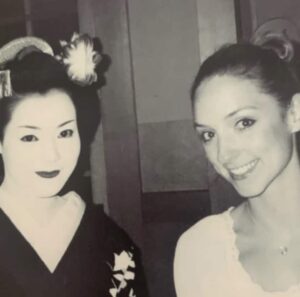
Okay. So, these tips are based on frank feedback from Japanese friends and from conversations overheard about trips of days gone by or hopes and dreams for future visits.
I’ve never ever heard of a homestay guest who has had a terrible time overseas but I thought I would share the easiest ways to be a fab host to your Japanese guests.
Also, as you know if you’ve read my About Me section, I have been an exchange student in Japan and lived with six Japanese families and so I can remember seeing things from the visitors point of view when in a completely different country.
So, since I’ve had lots of questions about the best food to serve to Japanese homestay students or ways to help visitors have the best time in your home, I thought that I would write this now – while all my ideas at at the forefront of my mind.
1. Don’t go for any crazy attempts at a Japanese breakfast (and what to do instead)
It’s so so sweet that you want to make someone feel “at home” but there is a 90% percent chance you will get it wrong. Not saying that it would go unappreciated, of course, but the rice will most likely be different to what they may be used to – and most likely cooked differently. For young students, getting it “wrong” might make them a little bit more homesick, even ( trust me, I did Year 11 in a country town in Japan and nothing made me feel more teary and shaky than something tasting drastically different to how I expected.
When I was a homestay exchange student, another Aussie girl in a different part of Japan had a homestay family who kept producing iced doughnuts at breakfast time as they read what foreign people like to eat. And the poor thing… all she was hanging for was a cheese and ham toastie.
So this is why I wouldn’t go with ” guessing.”
So what would I recommend doing instead?
Cereal isn’t a big thing in Japan ( you’ll actually find cereals in the candy section of the supermarkets in Japan ) but fruit can be too expensive to eat a whole bowl at a time, so I’d go heavy on the berries, pineapples and grapes.
Also, I’d buy a few different types of breads for toasting or just laying out butter and a couple of jam options.
2. The types of souvenirs your guests are searching for may not exactly be what you would choose
Individually wrapped sweets
In Japanese, the word “souvenir” is “omiyage” and it almost always refers to an edible gift.
In some countries, in the same way that many people expect postcards from colleagues or family members who travel, in Japan it is pretty much expected that those who travel will bring back a literal taste of that spot when they return.
As someone who has worked in several Japanese offices, there is almost always a tray of sweets on the table for workers to help themselves too.
Although it is far from environmentally friendly, the omiyage is usually individually wrapped so that portions are already decided and it doesn’t have to be eaten immediately ( so, for example, you don’t ever see a whole cake sliced up.) So… to give you an idea of something that is likely to be a well-received gift… is a box filled with individually wrapped mini-chocolate bar or a box of different flavoured candies , all wrapped up separately, or even mini-portions of spreads ( like those mini-jam jars that you see in hotels.)
Fabric Softener
Another popular souvenir that might surprise you at first, many of my Japanese friends like to buy fabric softener from other countries as they enjoy the smell. This always used to make me giggle.
High Quality Products from High End Shops
It can be a shock when a young student wants to wander into the section of a shopping mall that the locals may only be shopping in if they were to buy a wedding or christening present for a friend. In Japan, high quality gifts are really important and the wrapping and presentation is almost of equal importance. Another important factor? The ability to know that the item was made in that particular country.
So this is why you may not find many Japanese people to be quite as excited by typical souvenir shops – it’s not that common to collect souvenir teaspoons and keyrings and magnets.
3. Don’t forget that your “normal” is already pretty special
Many of my Japanese friends who have stayed in a friend’s home overseas loved it most when they felt a part of the normal family activities – in particular, eating or bbq-ing outside on the weekends, talking to family members while putting away the dishes, helping search for items on the shopping list while in the supermarket.
I would avoid eating out of home often and, instead, try and cook dinners together ( or try those dinners where you kind of “build meals” at the table like tacos or pizzas etc. ) Like anything with a language barrier, bonding while doing something visual is always easiest and the most fun.
4. Leave space for downtime
Trying to communicate in a new language all day is absolutely exhausting. Like hard core aerobics for the brain. Make sure you leave room in the day for “blank space.” I mention this because I used to get a little bit offended when we had exchange students stay with us in high school and they would disappear to their room for an hour or two a day – but , once I was in their shoes? I totally understand the need for downtime.
Also, in Japan, I’ve found that people just don’t feel the need to fill in all the quiet spaces in conversation with more … conversation.
In fact, a Japanese friend went to study in Canada and when she returned to Japan I asked her what she was enjoying most about being back in Japan. And, hilariously, she said ” Oh my god. I just rode in an elevator. There was one other guy in the elevator. And NO-ONE tried to make small talk between the floors!”





